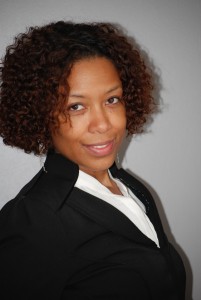My husband and I have been going back and forth on whether to keep our daughter in a Montessori school for one more year, her kindergarten year, or to just send her to the neighborhood public school.
I really wanted her to round out the Montessori school curriculum and finish the program so that she can get the most out of her experience in a Montessori school. My husband doesn’t want to pay tuition anymore and thinks the neighborhood school is a great option. Over the course of several weeks, we met with principals, directors, and teachers; we saw different portfolios, reviewed different curricula and there was a lot of discussion. In the end we decided to keep our daughter at the Montessori school for her kindergarten year. We decided the extra year of tuition was an investment in her future even if we couldn’t quantify it.

Like many families, we are starting early to makes sure our daughter is on the path toward a great education. By 2020 approximately 67 percent of jobs, according to Georgetown University’s Center for Education and the Workforce, will require more than a high school diploma. And of course, one must actually graduate from high school in order to pursue education beyond high school. The “more than” implies an associate’s degree, certificate program, bachelor’s degree or further education.
In 2014, Monroe County graduated 79 percent of its high school seniors in four years (92 percent when RCSD graduation figures are not included), which is on track with the rest of the state, even a little better. So as a county, by the numbers, it doesn’t look like we’re doing so bad… However, if we look at the city of Rochester, there is some work to do.
Four Year Cohort 2014 Graduation Rates:
Source: https://data.nysed.gov/index.php
On the surface, it may seem that at least suburban Monroe County students are on track to become the workforce of tomorrow, but are they? What does the workforce of tomorrow need to look like? What kind of skills will candidates need to address the business needs of tomorrow? Can a business environment be vibrant, if new ideas, perspectives and solutions aren’t present? To my point: In schools that are highly segregated along both racial and socioeconomic lines, both our city and our suburban students are deprived of the diverse environment that will prepare them world that awaits them.
GS4A is proposing a network of voluntary county-wide magnet schools with the intention of drawing a socio-economically diverse student body. The schools of course would be cutting edge and offer programming that a single district cannot offer by itself. These schools would be open to all students within Monroe County. This implementation has been shown to bring up graduation rates of economically disadvantaged students in counties around the country without bringing down the graduation rates of students who are not economically disadvantaged.
According to a recent report from the Century Foundation, “A New Era of Civil Rights,” over 80 school districts across the country have made intentional efforts to diversify their schools by socioeconomic status. The report highlights Cambridge, MA, which first implemented a universal public school choice in 2000 in an effort to diversify its schools. The 2014 four-year graduation rates in comparison to Boston and the state of MA are shown below.
Four Year Cohort 2014 Graduation Rates:
Source: http://www.doe.mass.edu/
In supporting and forming partnerships with county-wide magnet schools, the business community would in turn partake in the formation the viable, diverse and well equipped workforce of tomorrow that Monroe County needs to be competitive economically.
The Case for Diversity
Diversity in a workplace can drive economic growth and enable businesses to capture a greater share of the consumer market. This is important because the ethnic and racial landscape of the country is changing according to Census data. Having different points of view and vantage-points on your team will help your company grow and adapt to the changing demographic landscape of the country and better prepare us for global competition as well.
According to the Center for American Progress, “Recruiting from a diverse pool of candidates means a more qualified workforce. When companies recruit from a diverse set of potential employees, they are more likely to hire the best and the brightest in the labor market. In an increasingly competitive economy where talent is crucial to improving the bottom line, pooling from the largest and most diverse set of candidates is increasingly necessary to succeed in the market.”
The unfortunate truth is that by and large, students of color are not graduating at the same rates as their Caucasian peers, as shown in the chart above. If we look at the breakout in terms of economically advantaged and economically disadvantaged Monroe County students in that same year, the graduation rates are just as lopsided. Currently the pool of diverse candidates for businesses is limited, but it doesn’t have to be. The local business community can help assure a diverse workforce of the future by supporting reforms now that are most likely to improve gradation rates for the students who are not fully prepared for tomorrow’s workforce.
Do students —even suburban students—who are graduating in Monroe County have the skills and abilities companies need to move to the next stage? Companies like Microsoft, Intel, Delta Airlines, Exxon, State Farm and Target are upping the ante on the workforce of tomorrow; not only are they investing in public education, they are developing partnerships with schools and school districts to ensure that students are gaining the skills and talent they are looking for in their workforce of tomorrow.
We hope that Rochester area companies will also invest in educating tomorrow’s workforce. But at GS4A we think that means more than supporting cutting edge programs and donating in-kind services. It means supporting the multi-district Monroe County magnet schools that can improve city graduation rates and provide city and suburban students the opportunity to grow in a diverse environment.

